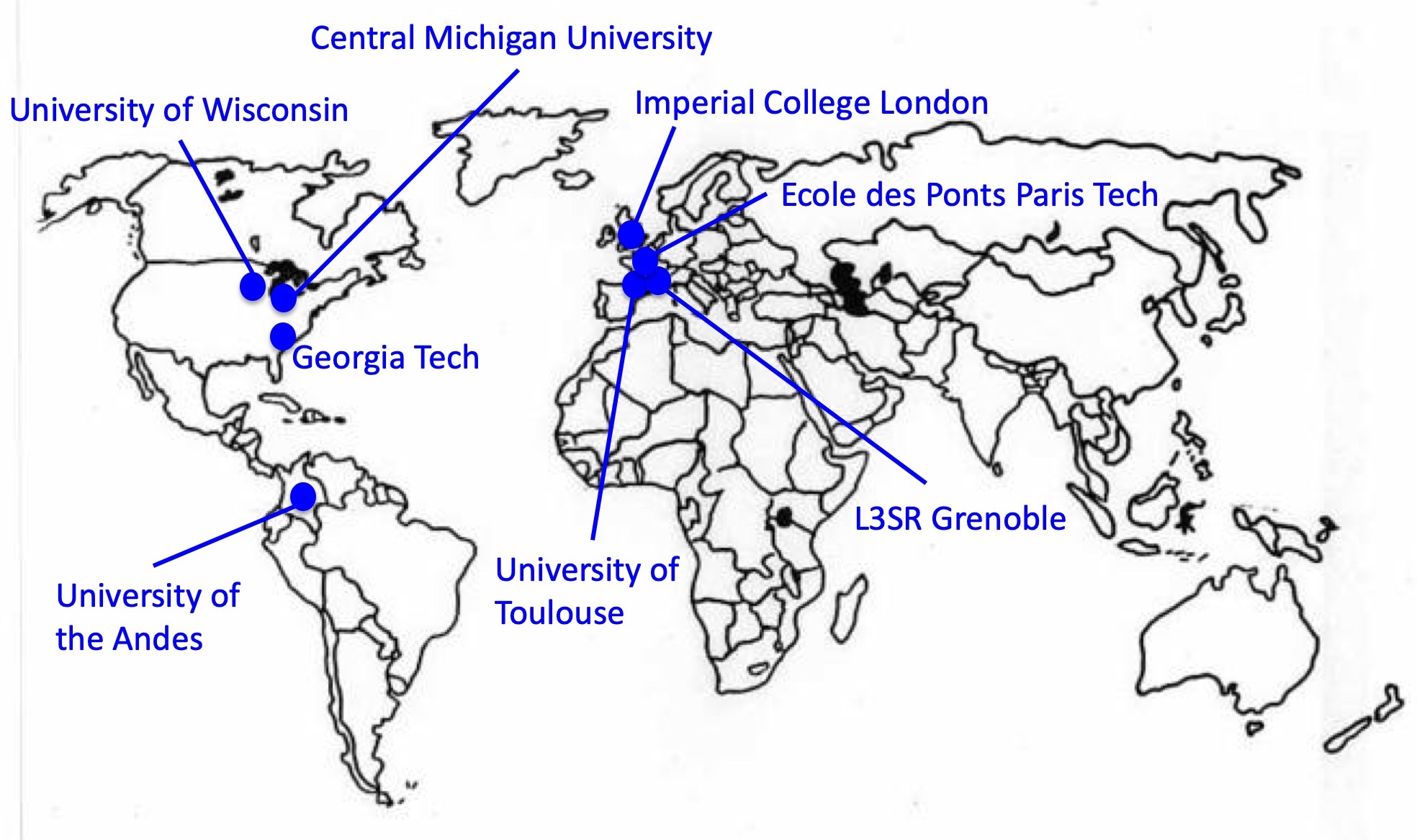
DeeP MeLT
Arson's Lab
Research Collaborations

In America
At Georgia Tech, we work with Dr. J.D. Frost, Dr. F. Hammond, Dr. D. Goldman and Dr. P. Chau on the development of a novel subsurface exploration system. The project of Burrowing Robot with Integrate Sensing System (BRISS) is a collaboration with Imperial College London (ICL). We also collaborate with Dr. L. Stewart on assessing the mechanical properties of concrete repaired by epoxy, with Dr. J. Macedo on the modeling of post-earthquake ejecta and with Dr. Sheng Dai on characterizing rock microstructure upon weathering.
In order to understand whether biotite weathering can explain spherical fracturing in granite, we collaborate with Dr. Ken Ferrier at the University of Wisconsin in Madison and with Dr. Niki West at the Central Michigan University.
Prof. Bernardo Caidedo's group at the University of the Andes in Bogota (Colombia) designed and built a container equipped actuators and with a hydraulic pump in order to test a root-inspired pressurized probe embedded in dry sand under biaxial stress conditions. The probes were designed and built at Georgia Tech. Tests were conducted at L3SR in Grenoble (France). X ray CT-scans acquired during the tests were processed, analyzed and interpreted in collaboration with the University of the Andes and with L3SR.
In Europe
Dr. Arson's group collaborates with Drs. C. O'Sullivan, D. Dini, T. Reddyhoff and A. Holmes at Imperial College London (ICL) on the development of the BRISS.
Dr. Arson has maintained strong scientific relationships with her alma mater Ecole des Ponts Paris Tech (France) since she graduated in 2009. Currently, the DeeP MeLT collaborates closely with Dr. Sébastien Brisard on the numerical modeling of complex matrix/inclusion systems with Janus, a program developed by Dr. Brisard to solve Lippmann-Schwinger equations with the Fast Fourier Transform.
The Deep MeLT collaborates with Dr. G. Viggiani's group at L3SR in Grenoble (France) to decypher the soil/root mechanical interactions during plant root system architecture development and to predict soil microstructure changes induced by plant root growth. The goal is to explain why roots increase soil strength.
In order to understand how slime mold (physarum polycephalum) adapts its network to its environment, we develop program to automatically process and analyze sequential images taken during slime mold growth experiments conducted with Dr. Audrey Dussutour at the University of Toulouse (France). Analyzes gave the first quantitative measure of slime mold growth rate. Current developments focus on characterizing network topology evolution.